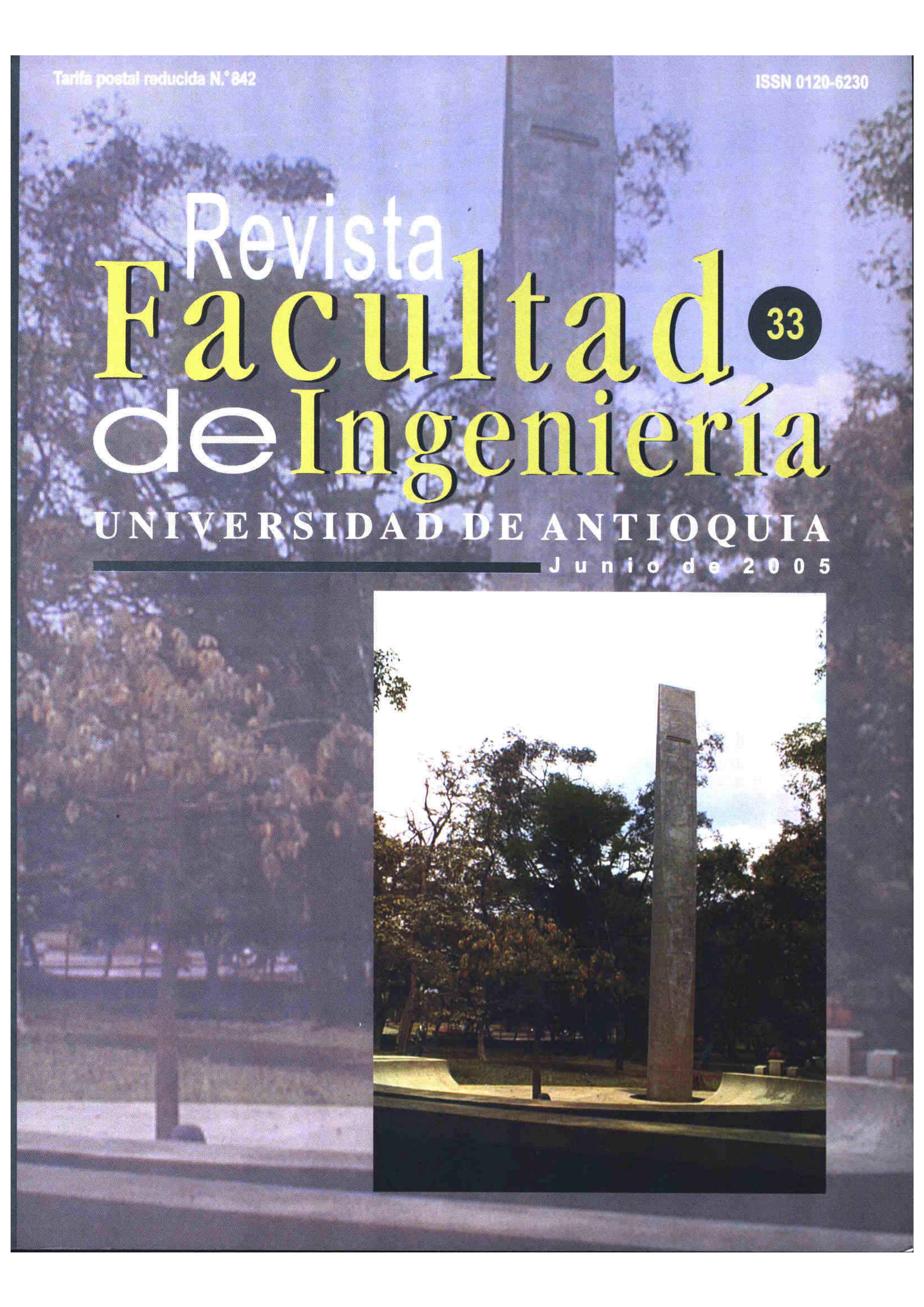Determination of the gaseous emission of toxic substances in the “Curva de Rodas” sanitary landfill in Medellín
DOI:
https://doi.org/10.17533/udea.redin.344307Keywords:
landfill gas, NMOC, VOC, sanitary landfill, emision, simulatesAbstract
Results of the investigation conducted at the sanitary landfill Curva de Rodas, aimed to determine the emission and migration of toxic substances are presented. Traces of bencene, toluene, hexane, vinyl chloride and xilene were found. Concentrations of these substances were, however, below threshold limits at the landfill and below detectable limits in the air of populated areas adjacent to the sanitary landfill.
Downloads
References
Jeuaseelan, S. “A simple Mathematical model for anaerobic digestion process”. Wat. Sci. Tech. Vol. 35. N.º 8. 1997.pp. 185-191. DOI: https://doi.org/10.2166/wst.1997.0312
Cicerone, R. J. et al. “Seasonal variation of methane flux from a Califronian rice paddy”. J. Geophys. Res. N.º 88. 1983.pp. 11022-11024. DOI: https://doi.org/10.1029/JC088iC15p11022
Eliassen, R. “Decomposition of Landfills”. American Journal of Public Health, Vol. 32. N.º 3. 1942. DOI: https://doi.org/10.2105/AJPH.32.9.1029
Craner, J. “Toxic gases emitted from landfills”. Rachel’s hazardous waste news. No . 226. 1991.
Agudelo R. y F. García. “Producción de biogás en rellenos sanitarios de residuos sólidos urbanos”. Cuaderno Ambiental. N.º 1. 2000. pp. 64-73.
EPA. “Regulatory package for new source performance standards and III(d) Guidelines for municipal solid waste air emissions”. Public docket No. A-88-09 (proposed May 1991). Research triangle park, NC. U.S. Environmental protection agency. 1991.
Bingermer, H. G. et al. “The production of methane from solid wastes”. J. Geophys. Rs. N.º 92. 1987. pp. 2181-2187. DOI: https://doi.org/10.1029/JD092iD02p02181
EPA. Compilation of air pollutant emission factors. AP-42, 5th ed., Supplement C. office of air quality planning and standards. Research triangle park, NC. U.S. Environmental protection agency. 1997.
Landg, R. J. T. A. Herrera, D. P. Chang, y G. Tchobanoglous, Trace organic constituents in landfill gas, preparado para California wasted management boar. Departament of civil engineering, University of California - Davis, Davis, CA. Noviembre de 1987.
Roy Albert, et al. Review and evaluation of the monument street (baltimore) landfill [pu/cees report #154]. (Princeton, NJ: Center for energy and environmental studies, school of engineering/applied science, Princeton University, 1983.
CRANER, J. A. Monitoring air emissions of volatile organic pollutants from landfills: A technical and policy analysis and the design, construction, and operation of a landfill air sampling system. (Princeton, NJ: Chemistry Department, Princeton University. 1984.
California Air Resources Board. “Evaluation Test on a Landfill Gas-Fired Flare at the BKK Landfill Facility”. West Covina, CA, ARB-SS-87-09, July 1986.
Bruce Kunkel. “Manual del Usuario Air Force Toxic” Chemical Dispersion Model (AFTOX). 1993.
Barlaz, M A. “Mass-balance analysis of anaerobically decomposd refuse”. J. Envir. Enger. Asce, Vol. 115. N.º 6. 1989. pp. 1088-1102. DOI: https://doi.org/10.1061/(ASCE)0733-9372(1989)115:6(1088)
“Criteria for municipal solid waste landfills”. 40 CFR Part 258, Vol. 56. N.º 196, October 9, 1991.
Downloads
Published
How to Cite
Issue
Section
License
Revista Facultad de Ingeniería, Universidad de Antioquia is licensed under the Creative Commons Attribution BY-NC-SA 4.0 license. https://creativecommons.org/licenses/by-nc-sa/4.0/deed.en
You are free to:
Share — copy and redistribute the material in any medium or format
Adapt — remix, transform, and build upon the material
Under the following terms:
Attribution — You must give appropriate credit, provide a link to the license, and indicate if changes were made. You may do so in any reasonable manner, but not in any way that suggests the licensor endorses you or your use.
NonCommercial — You may not use the material for commercial purposes.
ShareAlike — If you remix, transform, or build upon the material, you must distribute your contributions under the same license as the original.
The material published in the journal can be distributed, copied and exhibited by third parties if the respective credits are given to the journal. No commercial benefit can be obtained and derivative works must be under the same license terms as the original work.










 Twitter
Twitter